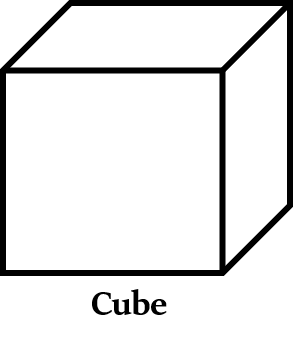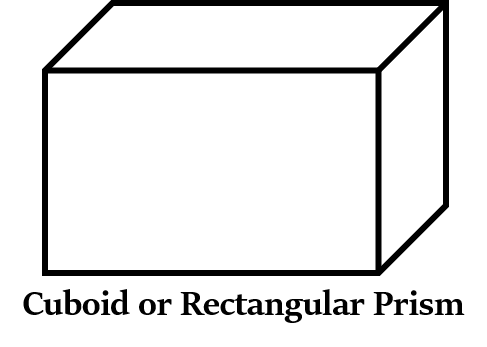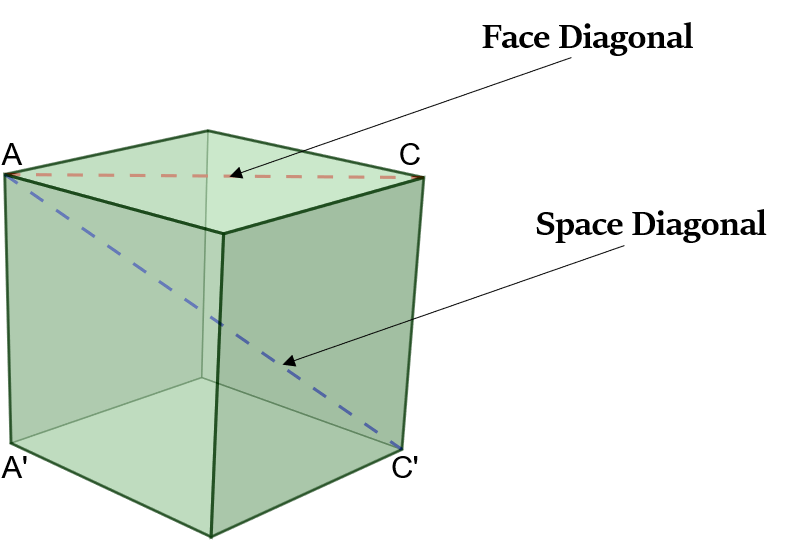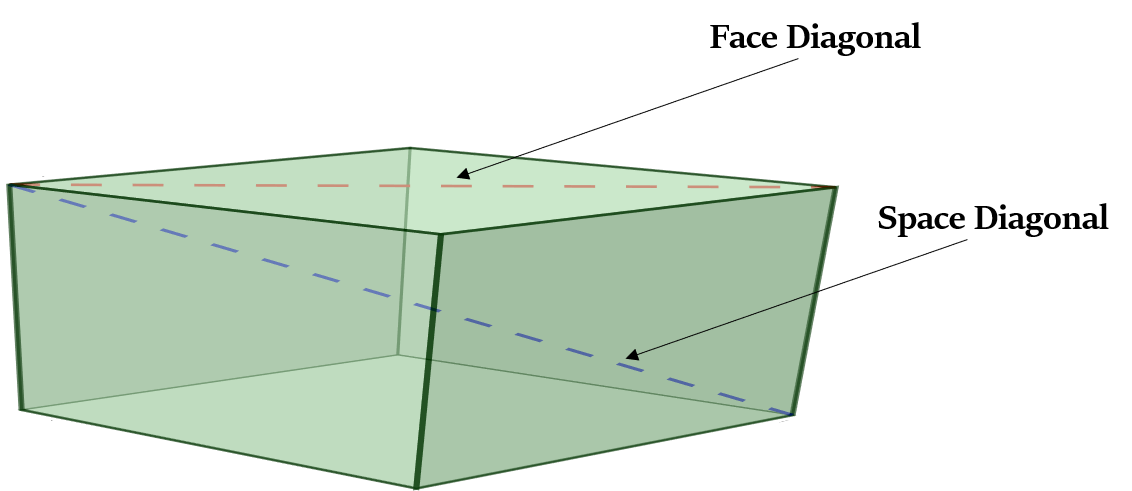Mensuration - Cubes and Cuboids
What is a Cube?
A cube is a three dimensional solid structure formed by six identical square faces joined along their edges.

A cube has:
- 6 square faces of same shape and the same area.
- 12 edges of equal length.
- 8 vertices.
In case of a Cuboid, at least some of the edges have different lengths. And so, the area of its faces may differ. So, we define it as follows.
A cuboid is a three dimensional solid structure formed by six rectangular faces joined along their edges.

Let’s understand these terms related cubes and cuboids.
Basic Terms related to Cubes and Cuboids
Face, Edge and Vertex
Face or Facet of a cube is its outer flat surface.
A cube has 6 faces which are all squares, i.e. each one of them has four equal sides. On the other hand, the faces of a cuboid may be squares or rectangles.
The line segment where two faces meet is called the Edge. A cube/cuboid has 12 edges.
The point where three edges meet is called the Vertex. A cube/cuboid has 8 vertices.

Diagonal
There are two types of diagonals that we deal with in case of Cubes and Cuboids.
Face diagonals
These are the line segments linking the two opposite corners of a face.
A cube/cuboid has 6 faces and there are two face diagonals on each face. So, a cube/cuboid has 12 face diagonals.

Space Diagonal
This is a line segment comecting two vertices that are not on the same face of a cube/cuboid.
Formulae related to Cubes and Cuboids
- If ‘a’ is the side of a cube, and
- l, b and h are the length, breadth, and height of a cuboid, then:
Formula 1: Volume
In case of Cubes:
Volume of cube = Area of base × Height = $a^2$ × a = $a^3$ cubic units
Volume of hollow cube = Volume of material = Volume of whole cube - Volume of inner empty space = $a^3$ - $(a - 2x)^3$
(where x is the thickness of each face of the cube)
In case of Cuboids:
Volume of cuboid = Area of base × Height = lb × h = lbh cubic units
Volume of hollow cuboid = Volume of material = Volume of whole cuboid - Volume of inner empty space
= lbh - (l - 2x) (b - 2x) (h - 2x)
(where x is the thickness of each face of the cube)
Formula 2: Surface Area
In case of Cubes:
Lateral surface area of cube = Perimeter of base × Height = 4a × a = 4 $a^2$ square units
Total surface area of cube = 6 $a^2$ square units
In case of Cuboids:
Lateral surface area of cuboid = Perimeter of base × Height = 2 (l + b) h square units
Total surface area of cuboid = 2 (lb + bh + lh) square units
Formula 3: Diagonal
In case of Cubes:

Face Diagonal of a Cube = $\sqrt{2}$ a units
Space Diagonal of a Cube = $\sqrt{3}$ a units
In case of Cuboids:

There are three different Face Diagonals of a Cuboid, $\sqrt{l^2 + b^2}$, $\sqrt{l^2 + h^2}$ and $\sqrt{b^2 + h^2}$ units
Space Diagonal of a Cuboid = $\sqrt{l^2 + b^2 + h^2}$ units